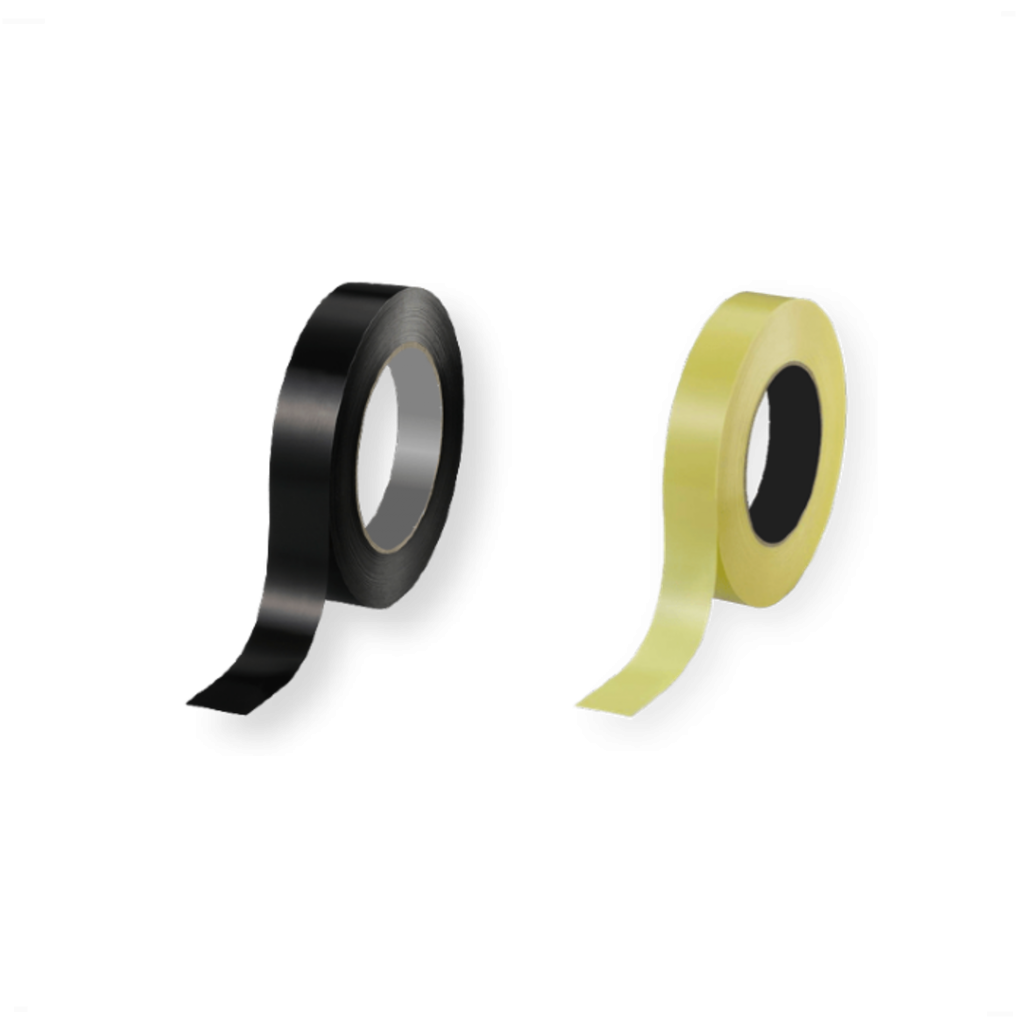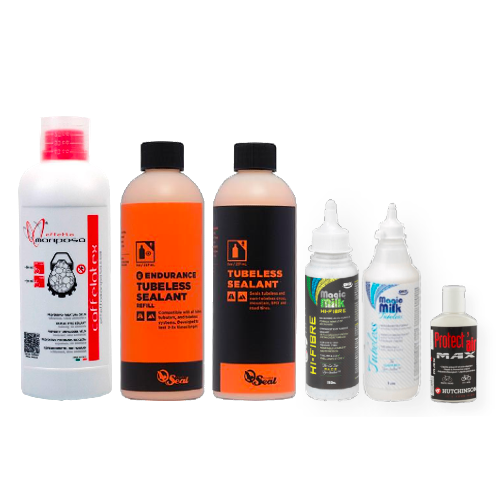If you’re considering ditching your inner tubes and going tubeless, read this article first.
As is still the case with most cyclists, my background is with inner tubes. I used to ride around on the roads on 23c tyres at 100psi, raising this to 120psi for racing. My fellow riders would ride at 30 or 35psi on their off road bikes; except riders who were part of the off road tubeless revolution which happened much earlier.
For users of inner tubes, the rims were narrow, and so anything less than rock hard pressures would lead the tyres to lean over the edge of the rim when cornering. This tyre/rim combination has become known as the ‘light-bulb’ effect since it best describes the shape of the tyre when inflated. Punctures are a bane of a cyclist’s life (up there with headwinds and for most, hills).
Even with the best puncture protective tyres, I would find myself riding uncomfortable high pressures, stopping in the dark, the rain and the cold to get filthy replacing an inner tube, before carrying on with a squirmy, under inflated tyre as a result of using a hand pump.
So is tubeless right for you? Read on and find out.
The Benefits Of Going Tubeless
I highly recommend going tubeless to all cyclists who use their bikes regularly. Ever since I converted in 2018, my days of stopping at the side of the road while commuting are over. Yes, you’ll probably need to top up the sealant every two or three months – but you can often go a lot longer without realising. And if you do encounter a puncture that doesn’t seal, it’s likely because the sealant has dried up and you can simply fit a spare inner tube and carry on riding. Then, you can repair the tyre at home. When you inspect a tyre like this, you will most likely see all the repairs that the sealant has done for you without you even realising. With an inner tube setup, each one would have meant stopping.
It very rarely leaves you in a situation that you wouldn’t have been in had you never moved away from running inner tubes. There are more occasions where running inner tubes could leave you stranded, than there are running tubeless. It works best on wheels that are used regularly (to keep the sealant flowing as a liquid) and my experience of riding tubeless over the colder months is often maintenance free, as warmer weather will cause the sealant to dry up sooner. In the summer, the only maintenance is checking your sealant levels and tyres.
In my work as a mechanic I’ve seen more and more riders realising and experiencing the benefits of going tubeless. The loudest voices against the new technology are from people who are still applying the same logic and knowledge they learned from running inner tubes – often forgetting the difficult learning curve they went through when they first started using those.
Why can’t I just run sealant in my inner tubes?
Well the simple answer is, you can do this. To my knowledge none of the sealant manufacturers today prohibit you from doing this. However, the results aren’t as good. Running inner tubes requires running higher pressures to prevent the problems described above and below. Expecting any tubeless sealant to work at above 80psi is in my experience likely to result in disappointment. Add to this, sealants don’t work as well in inner tubes as they do in tyres. Take for example that sealant manufacturer OKO claim that their Magic Milk sealant will work on punctures up to 6mm in a tubeless tyre, but only up to 3mm in an inner tube.
This also requires removable valve cores in your inner tubes, through which to add the sealant. Only some manufacturers and models have removable cores.
If you’re considering ditching your inner tubes and going tubeless then here are a few things you will have to ‘unlearn’:
Running High Pressures On The Road (We’re Talking Above 85/90psi)
If you like to run your road tyres rock hard but want to go tubeless, then realistically you will need to reassess your dependency on the high numbers and simply lower them. This is because road tubeless systems (tyres, rims and sealant), like most road bike tyre systems post about 2014, aren’t designed for these higher pressures and you will actually benefit from lowering them. Not just as a direct result (lowering your pressures reduces your rolling resistance, (check the data on the independent site bicyclerollingresistance.com, opens in a new tab and takes you away from tubelessspares.com) but also because you will of course be able to benefit from all the other benefits of going tubeless. In their day, tubular tyres may have been run at 180psi, likely on the softer, steel bikes of their day. Narrow clinchers with inner tubes were often run at above 100 psi on harsh aluminium bikes. Any less than this and they would feel squirmy and unpredictable. You would however only need to look at a rough surface, pothole or crack and you would feel it in your bones. Nowadays, with wider rims and tubeless tyres making for a wider, more stable (not to mention, sometimes more aero) tyre profile, figures of 60-85psi is fast becoming the new norm. The result is a much more comfortable system which absorbs the road vibrations and doesn’t lean over on the bends. Run any higher than this and you are dramatically reducing the ability of your sealant to do its job and not just shoot out of a compromised (punctured) tyre.
Running High Pressures To Avoid Pinch Flats Off Road
With inner tubes, for many riders 25psi was considered the lowest you could go before your endangered yourself with pinch flats, otherwise known as ‘snakebites’, to your inner tube. Take away the inner tube and this is no longer the case – you can run far lower pressures, almost as low as you like. There is still a danger of the rim striking the ground, or rocks, however, so you may want to experiment as you need to. Too low and you risk damaging the rim and/or the tyre. It is certainly not uncommon for a 2″ tyre to be run as low as 15 psi these days – or a 33c tyre at 20psi.
Fitting Your Tyres Starting At The Valve
It’s another widely spread falsehood that tubeless tyres are much more difficult to fit. This has usually risen from a bad experience and often from incorrect technique. A characteristic of tubeless compatible rims is the concave central channel which helps with tyre fitting. It’s essential that you position the tyre beads in this central channel when fitting the tyres as it effectively reduces the diameter of the rim and makes for an easier fit.
It also helps to start fitting your tyre opposite the valve and work towards it, which again is the opposite to what most people do when inner tubes are involved. More learned behaviour which must be unlearned.
Other than the fact tubeless tyres are intended to be tighter than the loosest clincher tyre, it’s a bit of a common misconception that they are harder to fit than non-tubeless tyres, as long as you follow this advice. In any case, you can always revert to using a plastic tyre lever as there is no inner tube to accidentally pinch.
Finding the source of your puncture
You don’t immediately need to remove the source of a puncture if you’re running tubeless. Leaving a piece of thorn in your tyre can help it stay inflated, and it will likely help the sealant do its job.
However, if you’ve run out of sealant and you need to fit an inner tube, the old rules still apply and you definitely will still need to remove the sharp object that is protruding your tyre. With a tyre that’s got a good layer of dried sealant on the inside, it can be more difficult to find the offending sharp item. The easiest way to avoid this is to stay on top of your sealant levels – the other way is to just make sure you find that sharp object before you fit your inner tube!
Is going tubeless best for everyone?
My short answer is, no. The system works best for riders who use their bikes regularly, otherwise the sealant inside the tyres can dry out between rides. Spinning the wheels will help keep the sealant in liquid form, thus avoiding this problem. If you have a special or a spare bike which you only use a few times a year: for example a vintage bike kept for sunny weather, or a backup commuter for when your main bike is in the shop, then I would say that if these bikes currently have inner tubes, it’s probably not worth converting them.
If your new bike (or new wheelset) has tubeless compatible wheels and tyres but currently has inner tubes, and you plan to use the bike regularly, I would highly recommend converting (see our guide ‘are my wheels tubeless compatible?‘). All you will need is a pair of valves and some sealant. More and more new bikes and wheels on the market are already tubeless compatible but may still be supplied with inner tubes to help with storage/showroom practicalities and to keep the cost down.
If your wheels are tubeless compatible but your tyres are not, then unless you consider your tyres cheap/unremarkable enough to ditch, I would use them until the tyres are worn out/due for replacement.
If neither your wheels or your tyres are tubeless compatible, and you are thinking of buying new wheels, make sure they are tubeless compatible. It will give you the most options in the future.



